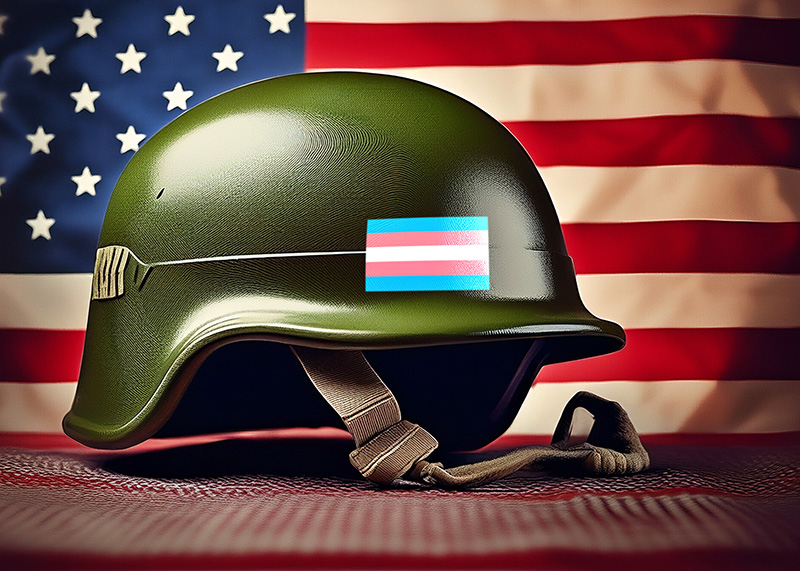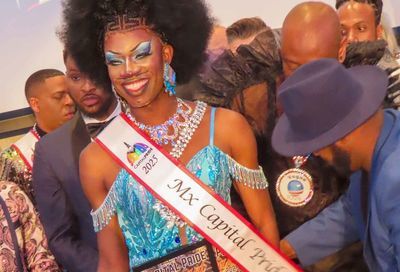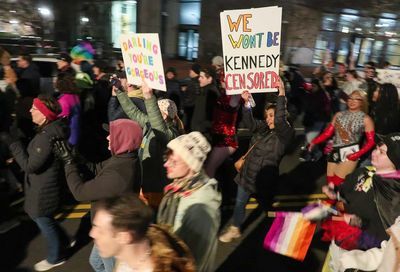Anti-Trans Violence Only Received 48 Minutes of Media Coverage in 2022
Media Matters finds that cable and broadcast outlets largely ignored anti-transgender violence, except for a single mass shooting.

Despite widespread anti-transgender violence in 2022, the news media spent less than an hour covering it.
The only exception was the Club Q massacre, which gained news primarily because it was a mass shooting that claimed five lives, rather than Club Q’s connection to the LGBTQ community.
According to a new analysis by Media Matters for America, a liberal-leaning media watchdog group, major cable and broadcast networks spent just over 6 hours reporting on anti-transgender violence, which claimed 38 lives in the United States in 2022.
However, the overwhelming majority of that coverage — 91%, or 5 hours and 12 minutes — was focused on the Club Q massacre, in which two of the victims were transgender.
Additionally, due to the timing of the attack, which happened near the end of the calendar year, in November 2022, for more than 10 months, coverage of anti-transgender violence on major TV networks was, at best, scant, if not absent altogether.
The remaining 48 minutes of coverage aired on one network, MSNBC, and were split into eight segments, despite the higher number of victims — 36 in total.
Additionally, unlike the two Club Q transgender victims, who were white, the majority of transgender or gender-nonconforming individuals were Black or Latinx women, highlighting the disparities that can exist in media coverage of violence based on the identities of victims.
“Media networks have a track record of fixating on individual tragedies that provide opportunities for sensationalized coverage rather than drawing earnest attention to the stark reality of violence against marginalized people in America,” Media Matters wrote in its report.
“This can give the impression that violence against trans people is isolated rather than an epidemic affecting many communities.”
The lack of coverage, whether on cable or broadcast networks, of violent incidents targeting transgender people appears to mimic a pattern observed in previous years, according to additional calculations by Media Matters.
In 2021, the total coverage of anti-transgender violence was 43 minutes, despite 57 transgender or gender-nonconforming people dying from violence that year.
In 2020, 54 minutes of coverage was dedicated to anti-transgender violence, and in 2019, the subject received only 48 minutes of TV coverage.
Estimates of the precise number of transgender fatalities are believed to be incomplete.
First, many transgender and gender-nonconforming people are often misgendered by family or law enforcement, meaning their deaths may not go reported. Additionally, other victims of violence may have been closeted, further depressing the numbers.
Moreover, there are cases where transgender or gender-nonconforming individuals’ causes of death may be suspicious, undetermined, or not necessarily classified as a homicide, such as a death in custody. According to HRC, there were at least 20 of those deaths in 2022.
At least 12 transgender or gender-nonconforming individuals have lost their lives thus far in 2023.
But advocates fear that a swath of anti-transgender laws being pushed in nearly every state – 76 of which have been enacted into law – may be forcing some people back into the closet, thereby distorting the correct figures and leading to decreased coverage.
Additionally, biased coverage that dehumanizes transgender people and portrays them as dangerous, manipulative, or mentally ill, or casts them as villains or child predators, may influence a network’s decision to withhold or ignore stories dealing with anti-transgender violence, as doing so would run counter to a “narrative” that certain outlets are trying to push.
Media Matters has offered advice on how to bring more attention to these issues, encouraging media outlets to include and center the voices of transgender individuals when talking about violence affecting the trans community.
Media outlets are not the only entities that can work to end anti-transgender violence.
In 2019, them.us reached out to its community members asking how people, as individuals, can work to end anti-transgender violence. The community wrote back, noting that everything from small actions, like donating to Black transgender women housing funds, to larger tasks, like educating faith leaders and elevating the visibility of transgender people, can work to end this epidemic.
Support Metro Weekly’s Journalism
These are challenging times for news organizations. And yet it’s crucial we stay active and provide vital resources and information to both our local readers and the world. So won’t you please take a moment and consider supporting Metro Weekly with a membership? For as little as $5 a month, you can help ensure Metro Weekly magazine and MetroWeekly.com remain free, viable resources as we provide the best, most diverse, culturally-resonant LGBTQ coverage in both the D.C. region and around the world. Memberships come with exclusive perks and discounts, your own personal digital delivery of each week’s magazine (and an archive), access to our Member's Lounge when it launches this fall, and exclusive members-only items like Metro Weekly Membership Mugs and Tote Bags! Check out all our membership levels here and please join us today!























You must be logged in to post a comment.